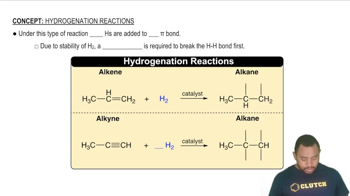Textbook Question
Determine the kinds of intermolecular forces that are present in each element or compound. b. NCl3
 Verified step by step guidance
Verified step by step guidance



Determine the kinds of intermolecular forces that are present in each element or compound. b. NCl3
Determine the kinds of intermolecular forces that are present in each element or compound. c. SiH4
Determine the kinds of intermolecular forces that are present in each element or compound. d. HF
Determine the kinds of intermolecular forces that are present in each element or compound. d. He
Determine the kinds of intermolecular forces that are present in each element or compound. a. PH3 b. HBr
Determine the kinds of intermolecular forces that are present in each element or compound. c. CH3OH